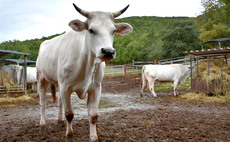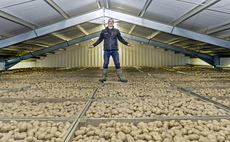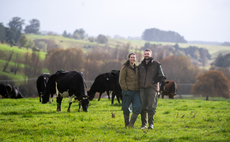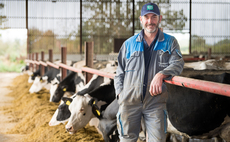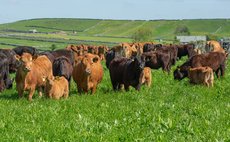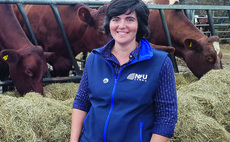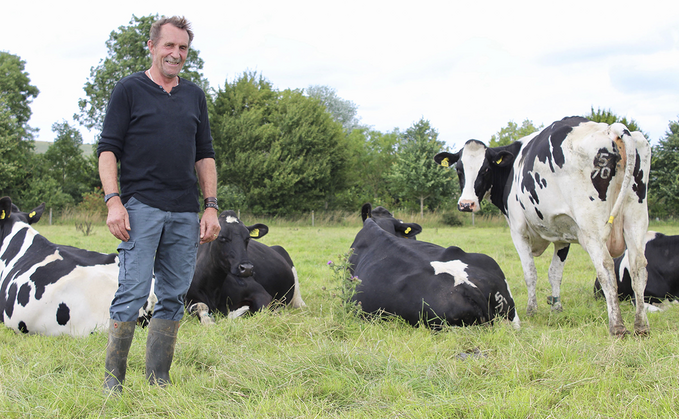
Lowering the protein in parlour concentrate has the potential to boost margin over purchased feed by 5p/cow/day and reduce predicted nitrogen excretion by 15 per cent on one Wiltshire farm.
The benefits of feeding less crude protein when cows are grazed has resulted in better cow health and performance, improved margin over purchased feed and environmental gains at Manor Farm, Pewsey.
When the 500-cow herd was traditionally fed a 16 per cent parlour concentrate at grazing, body condition score (BCS) loss and abortions were proving a problem.
Milk butterfats would also tend to drop from 4 per cent to 3.5 per cent. Cows calve from August to December and yield 8,500-9,000 litres/cow/year.
Farm manager Nick Catchpole believes it highlighted how feeding high protein diets could be negatively affecting performance.
He says: Typically we [the dairy industry] try and increase yield by throwing protein at the cow. It is really bad, it is totally inefficient and really bad for the cow, as they live their whole life in digestive stress. Plus it is not good for your pocket.
This is a particular risk when cows are consuming grazed grass which is naturally high in protein; at turnout it can be as much as 23 per cent crude protein (CP) in the dry matter.
If cows are eating this high protein grass, receiving a high protein parlour concentrate, and energy levels are insufficient to utilise it, rumen efficiency could be compromised.
This can lead to excessive weight loss, which Mr Catchpole aims to avoid at all costs in order to protect health and production. He targets a consistent BCS of about 2.75. It was a discussion with Mole Valley �������� sustainability and technical manager Dr Matt Witt, which instigated the reduction in protein levels at turnout.
Using Mole Valley �������� Precision Nutrition rationing programme, Dr Witt demonstrated how lowering the protein levels in the parlour concentrate to 12 per cent could boost margin over purchased feed by 5p/cow/day and reduce predicted nitrogen excretion by 15 per cent.
As nitrogen losses raise the likelihood of water contamination and increase nitrous oxide emissions, this has environmental benefits.
Now, protein levels in the parlour concentrate are tweaked to complement fresh grass quality. This has been achieved by using the same protein sources, such as rape and distillers, but feeding less. Soya and palm are avoided.
Mr Catchpole says: Very shortly, I think with milk processors, there will be an obligation or financial incentive not to use these products. With that know edge, it is worth going there now. At the start of the season, cows tend to receive a 12 per cent protein concentrate, although this may increase to 14 per cent should grass protein decline.
At 12 per cent, this delivers a total dietary CP of about 18-19 per cent, compared to 21-22 per cent previously.
Lowering protein and overall better nutrition has been reflected in more consistent BCS. Average conception rates are also now at 50 per cent and milk fat consistently 4 per cent.
Dr Witt says it is not simply about lowering the CP in the parlour concentrate, but feeding the right type of protein. That means balancing for rumen degradable protein and bypass protein and matching that with energy supply so the cow can produce high levels of microbial protein.
Environmental impact of feeding different levels of protein through the parlour when grazing (Calculated using Mole Valley �������� Precision Nutrition rationing programme)
Grazing with 12% protein compound
Grazed grass (mid-season; kg/cow)- 75
12% protein parlour concentrate (kg/cow)- 6
16% protein parlour concentrate (kg/cow)- 0
Total dietary crude protein (% DM)- 19
(grazed grass and parlour concentrate)
Margin over purchased feed increase (p/cow/day)- 5
Nitrogen excretion (g/cow/day)- 379
Grazing with 16% protein compound
Grazed grass (mid-season; kg/cow)- 75
12% protein parlour concentrate (kg/cow)- 0
16% protein parlour concentrate (kg/cow)- 6
Total dietary crude protein (% DM)
(grazed grass and parlour concentrate) - 21
Margin over purchased feed increase (p/cow/day)- 0
Nitrogen excretion (g/cow/day)- 447








![Farming industry get behind FG's SAVE BRITAIN'S FAMILY FARMS campaign: "[This] campaign will help deliver our message to Government"](https://image.chitra.live/api/v1/wps/877bbe7/0f91ad70-ab9b-4ac9-bc2a-53dfa9e75558/10/BOB-Nigel-Owens-0848-Recovered-323x202.jpg)

